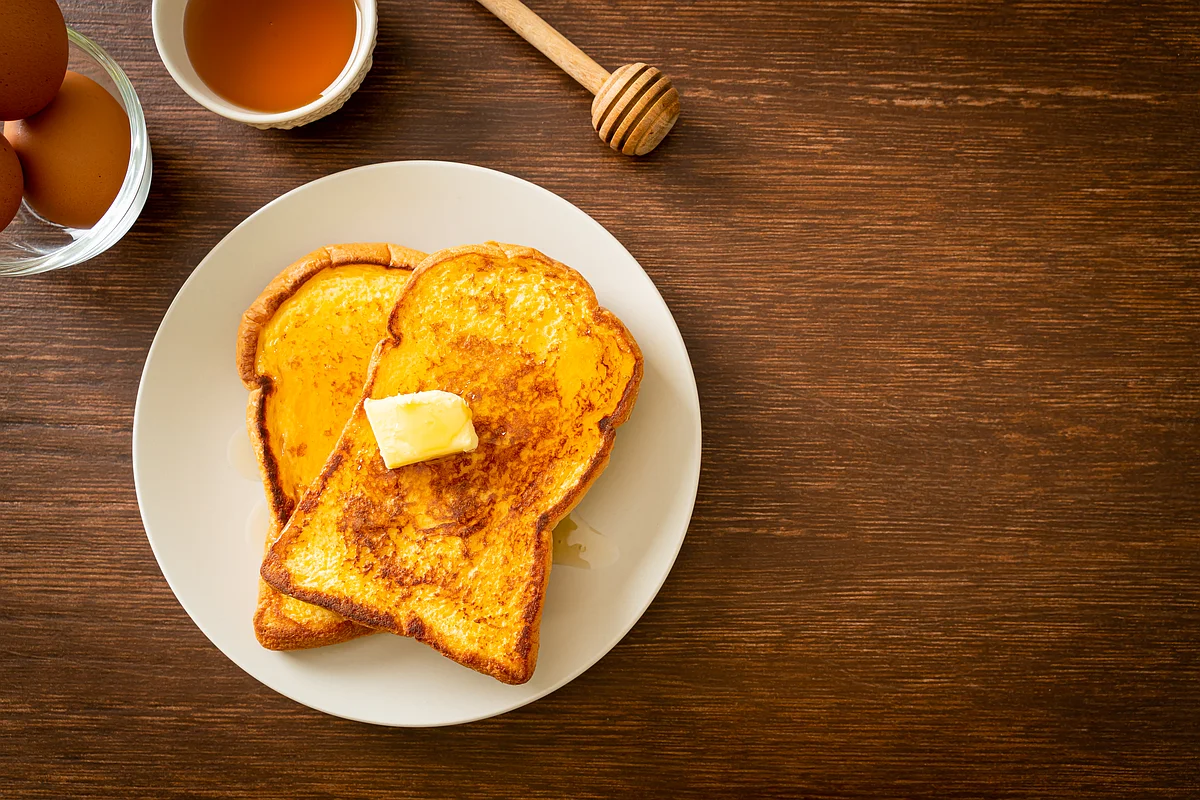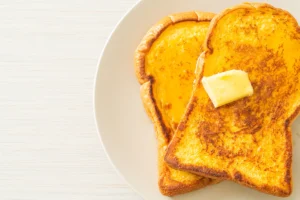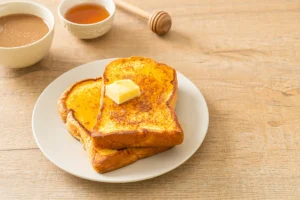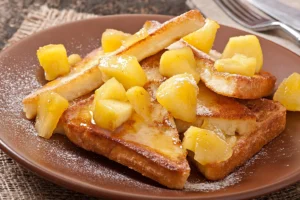French toast is a classic breakfast dish enjoyed around the world for its deliciously soft center and slightly crispy outer layer. However, one of the most important factors in making great French toast is selecting the right bread. The texture, flavor, and absorbency of the bread can make or break the dish. Therefore, this guide will walk you through the best breads for French toast, ensuring you achieve the perfect balance of flavor and texture every time.
Why Choosing the Right Bread Matters
When it comes to French toast, not all breads are created equal. For instance, some are light and fluffy, while others are dense and hearty. Ultimately, the key to perfect French toast lies in the bread’s ability to absorb the egg mixture without falling apart or becoming too soggy. Here are some key reasons why the type of bread matters:
- First, texture plays a crucial role. Soft bread will absorb more liquid but may fall apart if it’s too fresh. Meanwhile, dense bread can hold its shape but might not soak up enough of the custard.
- In addition, the bread’s absorption qualities determine how much egg mixture it can soak up without becoming soggy.
- Finally, flavor is essential. Certain types of bread, like brioche or sourdough, bring distinct flavors to the dish, enhancing its taste profile.
As a result, it’s crucial to consider the bread’s texture, density, and how well it pairs with your chosen toppings. You’ll want bread that enhances your French toast experience without overpowering the other flavors.
Top Breads for French Toast
Selecting the right bread can transform your French toast from mediocre to memorable. Thus, here are the top choices to consider.
1. Brioche
One of the most popular choices for French toast is brioche. This French bread is known for its rich, buttery texture and slightly sweet flavor. It’s soft enough to absorb the egg mixture, yet sturdy enough to hold its shape when cooked.
- Brioche is perfect for making decadent French toast, thanks to its delicate crumb and buttery taste.
- Moreover, it pairs well with sweet toppings like fresh berries, whipped cream, and syrup.
For those who love indulgent French toast, try using brioche for recipes that call for extra flavor and richness. If you want to master this dish, check out this brioche French toast recipe to get started.
2. Challah
Challah is another excellent option. This traditional Jewish bread is similar to brioche but less sweet. It’s often braided, which gives it a beautiful, distinctive look.
- The eggy nature of challah makes it ideal for soaking up the custard mixture.
- Additionally, it holds its shape well when cooked and creates a soft, flavorful bite.
Furthermore, for an even more comprehensive guide on how to make the perfect French toast with challah, explore the classic recipe from Food Network.
3. Sourdough
On the other hand, for those who prefer a slight tang in their French toast, sourdough is a great option. Its natural acidity contrasts beautifully with the sweet toppings commonly used for French toast.
- Sourdough bread tends to be more rustic, with a chewy crust and soft interior.
- Consequently, it’s especially good for creating a savory version of French toast.
Use sourdough to create a more complex flavor profile in your French toast, balancing sweetness with a hint of sourness.
4. French Baguette
A French baguette is a classic choice for French toast, especially if you’re looking to use leftover bread. Baguettes have a chewy texture and a slightly crispy crust, making them ideal for absorbing egg mixtures.
- The small slices of baguette make for perfect bite-sized pieces of French toast.
- However, they’re best served with powdered sugar and fruit.
If you’re using a baguette, be sure it’s a bit stale so it doesn’t turn soggy when soaked.
5. Texas Toast
For a thick, hearty option, Texas toast is a favorite. In fact, this bread is often used in commercial French toast recipes because of its size and ability to soak up a large amount of egg mixture.
- The thick slices allow for a more substantial bite, perfect for adding toppings like bacon or syrup.
- Texas toast is great for those who prefer a softer, fluffier French toast.
You can easily find Texas toast in most grocery stores, and its thick nature makes it ideal for soaking up all the custard.
Specialized Breads for French Toast
Aside from the classic choices like brioche and sourdough, there are a few more specialized breads you might want to try for a unique French toast experience.
1. Japanese Milk Bread
Japanese milk bread, or Shokupan, is another excellent choice for French toast. This bread is incredibly light and fluffy, with a soft crumb that creates a delightful texture when fried.
- For those who prefer a crispy outer layer, this bread creates that while staying soft and pillowy on the inside.
- Additionally, it’s perfect for both sweet and savory French toast recipes.
2. Cinnamon Raisin Bread
Cinnamon raisin bread adds a pre-flavored element to your French toast. The bread itself has hints of cinnamon and sweetness, which means you don’t have to rely heavily on toppings.
- The raisins add bursts of sweetness, which complement the egg custard.
- Thus, it’s ideal for a quick and flavorful French toast breakfast.
3. Potato Bread
Potato bread is a less common but fantastic option for French toast. Its soft, tender texture makes it a perfect candidate for soaking up the egg mixture.
- Consequently, potato bread’s light texture makes for an airy French toast.
- This bread is a great option if you want to add unique flavors and textures to your meal.
4. Gluten-Free Bread
For those who are gluten intolerant or prefer gluten-free diets, there are plenty of gluten-free breads available that work well for French toast. Brands like Udi’s and Canyon Bakehouse offer gluten-free breads that maintain their structure when soaked in custard.
- Look for gluten-free bread with a sturdy structure to avoid it falling apart.
- Moreover, it’s important to let gluten-free bread soak for a little longer to fully absorb the egg mixture.
How to Make the Perfect French Toast
Once you’ve selected your bread, the next step is preparing it for the perfect French toast. Here’s how you can make it:
1. Preparing the Egg Mixture
- Ingredients: Eggs, milk (or cream), sugar, cinnamon, vanilla extract, and a pinch of salt.
- Whisk all the ingredients together until smooth.
2. Soaking the Bread
- First, ensure the bread slices are thick—around 1 to 1.5 inches.
- Dip the bread into the egg mixture, allowing it to soak for 20-30 seconds on each side.
3. Cooking Techniques
- Heat a pan over medium heat with a little butter or oil.
- Cook the soaked bread for about 2-3 minutes on each side, or until golden brown.
4. Finishing Touches
- Serve your French toast with a variety of toppings, like fresh fruit, maple syrup, powdered sugar, or whipped cream.
At this point, each bread type will have its own unique absorption rate and cooking time, so it’s important to adjust accordingly. Furthermore, experimenting with different breads can lead to the perfect slice every time!
Frequently Asked Questions
Here are some common questions people have when making French toast:
- What kind of bread is the healthiest for French toast?
Whole wheat bread is a healthier option as it contains more fiber and nutrients compared to white bread. - Can I use fresh bread for French toast?
Yes, but it’s recommended to use slightly stale bread as it soaks up the egg mixture better. - How long should bread soak for French toast?
The bread should soak for about 20-30 seconds on each side, depending on its thickness and texture. - Can gluten-free bread be used for French toast?
Absolutely. Just make sure to select a sturdy gluten-free bread that won’t fall apart when soaked. - Why is stale bread better for French toast?
Stale bread absorbs the custard mixture more evenly, preventing it from becoming soggy. - Can I use sandwich bread for French toast?
While it’s possible, sandwich bread tends to be too soft and may not hold up as well during cooking. - Is brioche better than challah for French toast?
Both breads work well, but brioche tends to be richer due to its buttery texture, while challah is slightly less sweet. - What toppings go best with different types of bread?
Brioche pairs well with sweet toppings like syrup and fruit, while sourdough goes great with savory options like bacon or eggs.
Common Mistakes to Avoid
To make the perfect French toast, there are some pitfalls to avoid:
- First, avoid using bread that’s too fresh. Fresh bread can become too soggy. Instead, it’s better to use slightly stale bread for better texture.
- Second, not soaking the bread long enough can result in under-soaked bread that won’t absorb enough of the custard mixture, leading to dry French toast.
- Finally, make sure you’re cooking at the right temperature. Overcooking or undercooking can lead to burnt or soggy French toast, so aim for medium heat.
Final Thoughts
In conclusion, the key to making the perfect French toast lies in your choice of bread. Whether you prefer the rich, buttery texture of brioche, the slight tang of sourdough, or the simplicity of Texas toast, each bread offers its own unique twist on this classic dish. As you experiment, don’t be afraid to get creative with your toppings. With the right bread and tips, you’ll be on your way to making the best French toast ever.



